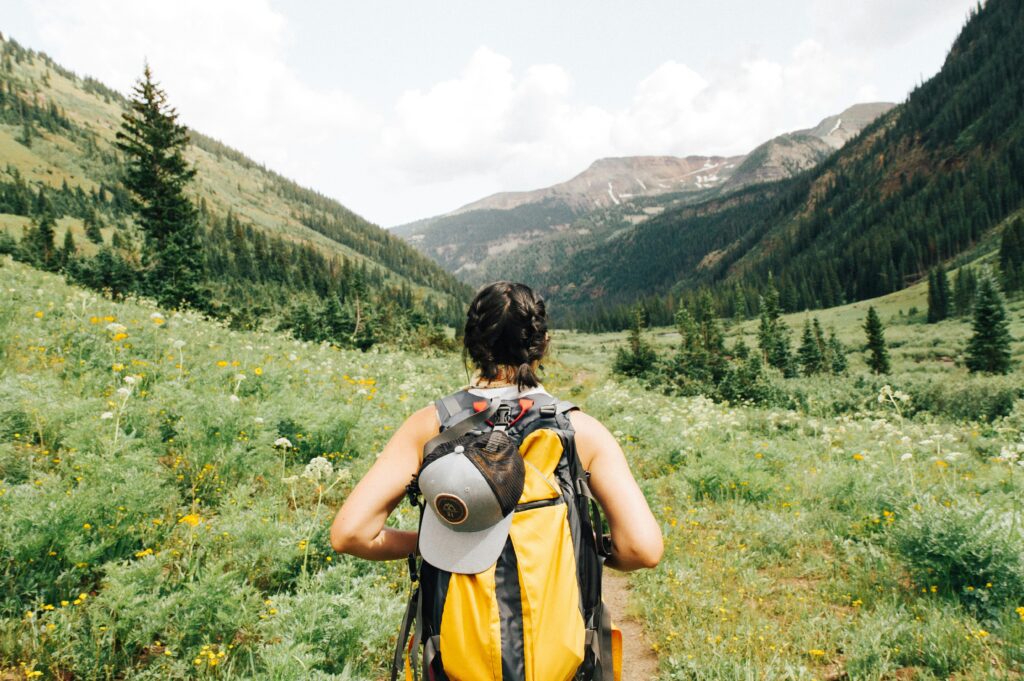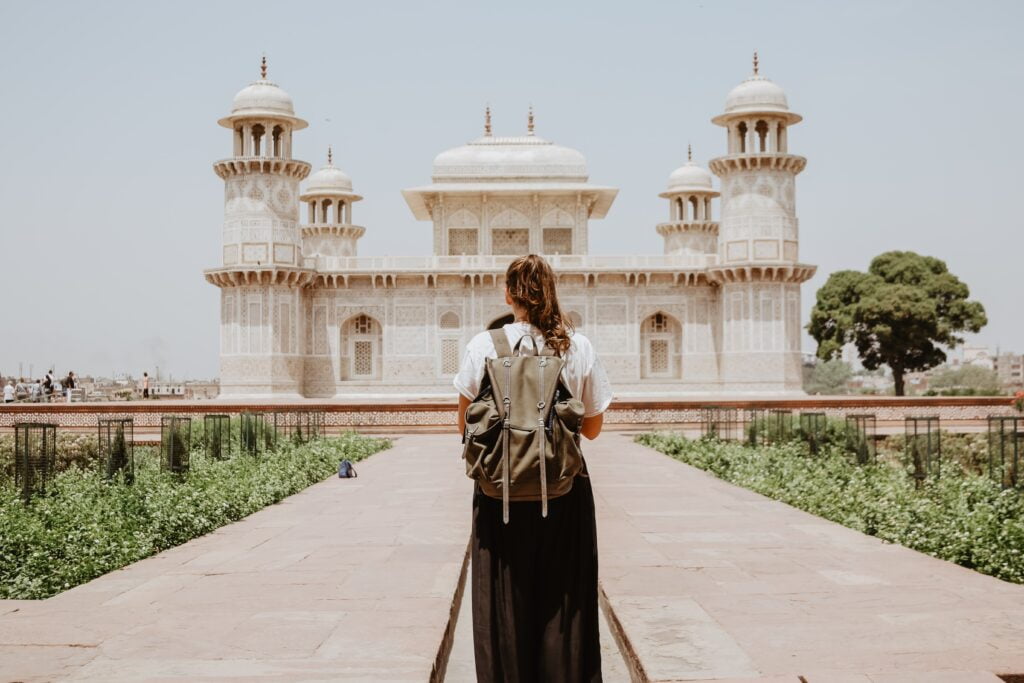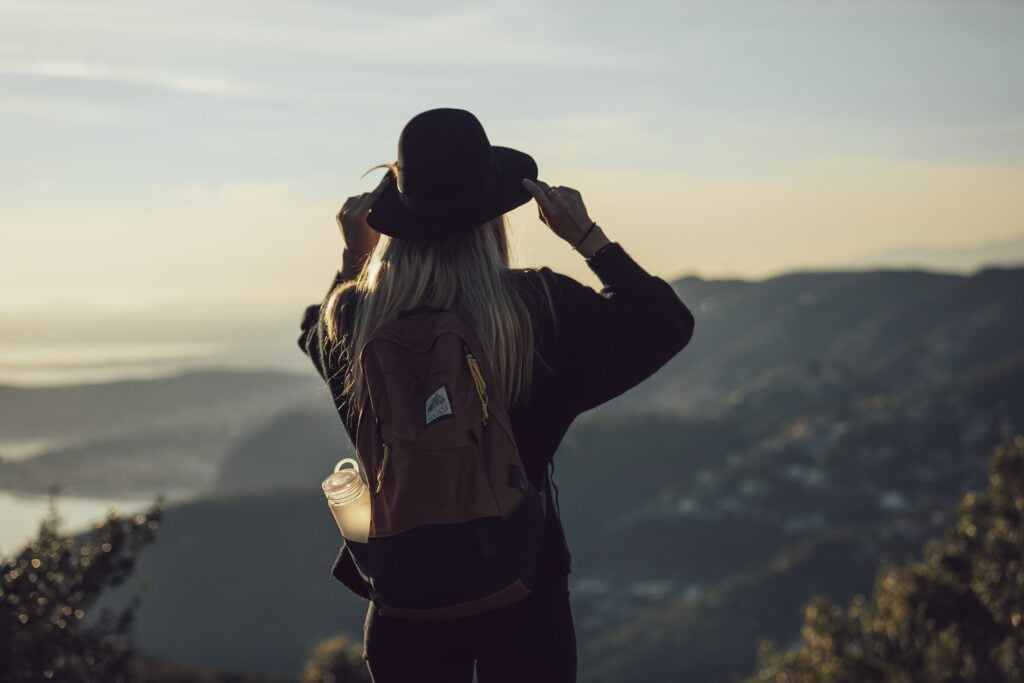introduction
Travelling Solo Mastery: Solo travel is becoming more and more popular as more people choose to go on trips by themselves. Unlike organized tour groups, solo travelers individually discover new places, providing a unique and personal experience. The idea of going off on your own and seeing the world at your own pace has always intrigued a lot of individuals.
When travelling solo, the most crucial thing to remember is to always be safe. Since no one else can be relied upon in an emergency, it becomes imperative to recognize potential risks and take appropriate action. Knowing how to properly navigate unfamiliar territory is vital to having a confident and peaceful journey, whether you’re traveling through a bustling metropolis or serene countryside.
This post is meant to be your traveling companion when you go alone. It aims to give you practical, easy-to-follow strategies that prioritize your safety. The guide’s goal is to provide you the knowledge and confidence you need to explore the world independently by offering thoughtful and practical recommendations. Rather than discourage you from travelling solo, the goal is to enhance your experience by ensuring that you are prepared and safe for the journey. Prioritize safety above all else and you’ll become an adept solo traveler!.
Continue from Part One
Transportation Safety
An essential component of travelling solo is transportation safety. When selecting a transportation option, do your homework and give preference to airlines, buses, or trains that have a good safety record. Adopt safe habits when taking public transit, such as being mindful of your surroundings and protecting your things. You can help ensure that solo travel is safe and comfortable by doing your research before departing and by adhering to safety regulations.
Safe modes of transportation:
Choosing wisely the forms of transportation to take when travelling solo is essential to ensuring your safety. For your travel, do your homework and select reliable buses, trains, and airplanes. Seek out businesses that have a solid safety record and satisfied clients. Look for any caution or advice regarding certain transportation companies while planning a trip. Prioritize safety over cost when selecting your means of transport, and evaluate aspects such as reliability, punctuality, and general reputation. You can raise the chances of a safe and secure travel from one place to another by conducting thorough research.

Safe practices while using public transportation:
Adopt safe habits when taking public transit to increase your overall safety when travelling solo. Pay attention to your surroundings, particularly in crowded places. Wait for buses and trains at places that are designated and well-lit. Ask locals or other travelers for guidance if you’re not sure if a certain kind of transportation is safe. Observe any safety instructions issued by transportation authorities, such as those about seat belt use or aircraft emergency evacuation protocols. You can make traveling safer by being cautious and following safety instructions.
Navigation in unfamiliar territories:
To ensure transportation safety when travelling solo, navigation in foreign areas is crucial. Make sure you have offline access to maps and use navigation apps and maps to plan routes and navigate. For local journeys, you should also depend on reliable transportation applications; pick providers who have a high user base and good reviews. You may improve your ability to travel alone safely and comfortably in new places by keeping educated and making use of technology.
Utilizing maps and navigation apps:
One of the most important aspects of transportation safety when travelling solo is navigating uncharted territory. Make use of navigation applications and maps to make finding your way around easier. To avoid relying on constant internet connectivity, download offline maps of the regions you intend to see before you go.
You can get real-time instructions from apps like Google Maps, Maps. me, or other trustworthy navigation systems to help you find your way around streets, landmarks, and public transportation routes. Learn the general layout of the place as well as the whereabouts of key locations such as your lodging, transit hubs, and emergency services. In this manner, you can navigate unknown places with assurance and lower your chance of getting lost.
Trustworthy transportation apps for local rides:
When looking for local rides, think about utilizing reliable transportation applications in addition to general navigation tools. Within cities, ride-sharing services such as Uber, Lyft, or local ones can offer a safe and practical mode of transportation. Features like driver information, projected arrival times, and clear pricing are frequently included in these apps. Before utilizing any transportation app, confirm that it is credible and frequently utilized by locals. Examine customer reviews to determine the service’s dependability and security. You can effectively navigate local transit alternatives and make travelling solo safer and more convenient by adding these apps to your travel toolset.
Socializing Wisely
When travelling solo, it’s important to socialize sensibly by making conscious attempts to make safe and enjoyable connections with other travelers. Meet individuals who share your interests digitally by using travel forums and social media, and you may even set up meet-ups. If you want to build relationships in a structured setting, think about participating in group activities and tours intended for independent travelers. You can prioritize safety during your solo trips while also improving your social journey by striking a balance between online and offline connections.

Meeting and connecting with fellow travelers:
Making new friends when traveling alone can enrich and delight your experience. Use social media sites and online travel forums to make connections with people who share your interests. Join forums or travel groups associated with your travels to meet possible travel companions and share advice and experiences. You can meet others who are interested in similar things you are or who could be traveling to the same locations by using social media sites like Facebook, Instagram, or specialized travel forums. Talking to people online allows you to learn new things, establish virtual friendships, and even organize get-togethers when traveling. However, use caution and ensure your online interactions prioritize safety.
Group activities and tours for solo travelers:
A great approach to meeting people and exchanging stories in a controlled and secure setting is to join up for group activities and excursions intended for independent travelers. Numerous locations provide group trips designed especially for single travelers. These itineraries frequently incorporate adventures, guided tours, and city walks. Engaging in these kinds of events guarantees a certain level of safety in numbers in addition to offering the chance to meet new people. Be open to meeting individuals from different backgrounds do your research and select group activities that fit your interests. During these activities, shared experiences can create lasting relationships and improve your single travel experience.
Travelling Solo Mastery: Trusting your instincts
Having faith in your intuition is essential to networking sensibly when traveling alone. In social situations, be aware of your discomfort and gut instinct to see warning signs. Recognize when to say no to offers of help or invitations, and make choices that put your safety first. You may comfortably handle social encounters and get the rewards of meeting new people while ensuring your well-being is protected on your solo adventure if you are aware of and receptive to your instincts.
Recognizing red flags in social situations:
when interacting with people when traveling alone can be enjoyable, it’s important to follow your gut and recognize any warning signs in social situations. Observe your intuition and gut instincts. Take notice of anything that makes you feel uneasy or suspicious about a person or circumstance. Concerning indicators could be undue pressure, ambiguous objectives, or uncomfortable circumstances. Being aware of and paying attention to these feelings is a necessary part of following your gut. Don’t ignore your inner instincts, and be ready to leave any circumstance that makes you fearful for your safety.
Knowing when to decline invitations or assistance:
Deciding whether to turn down offers of help or invitations is a part of socializing responsibly. Even though meeting new people is a common part of traveling alone, it’s important to consider all the options and make an informed decision. Think about your comfort level if an invitation seems too spontaneous or comes from someone you recently met. Please decline politely if you’re unsure or uncomfortable. Similarly, you can politely decline help if someone offers it but you feel like something is off-putting. When making decisions that put your safety and well-being first, follow your instincts. Being selective in social encounters to guarantee a safe and enjoyable solo travel experience is what it means to be cautious, not hostile.
Emergency Preparedness
Lone travelers need to be aware of the emergency services in their area. In the nations you want to visit, learn or keep the local emergency numbers for law enforcement, ambulance services, and fire departments. For additional assistance in case of emergency, be aware of the location and phone number of the embassy or consulate of your nation. You may make solo travel safer and more secure by being well-prepared and keeping this knowledge close at hand. This will also improve your capacity to respond appropriately to unforeseen events.

Knowledge of local emergency services:
Local emergency numbers:
Being ready for anything may happen at any time when traveling alone, so being prepared for emergencies is essential. Learning the local emergency numbers of the nation or countries you intend to visit is one of the first things you should do. Every destination has designated phone numbers for emergency services, such as police, ambulance, and fire. Keep a written copy of these numbers with your travel documents and commit them to memory or store them on your phone. Having quick access to local emergency numbers guarantees a timely response to any unanticipated problems and enables you to seek aid swiftly if you find yourself in a difficult situation.
Embassy and consulate information:
Being aware of your nation’s embassy or consulate’s location and phone number at the destination is another essential part of being prepared for emergencies. For people who are traveling overseas, embassies and consulates offer guidance and support. Learn about their services, such as how to seek medical attention, report a misplaced passport, and deal with other situations. Keep a printed copy of the embassy’s contact details with you and save it on your phone. Should you encounter any significant problems, getting in touch with your embassy can offer priceless advice and assistance, guaranteeing that you get the help you need in trying circumstances.
Communication tools during emergencies:
It’s important to have efficient communication equipment on hand in case of emergency. Make a list of local and international contacts for an emergency and provide it to a reliable person. If you want to be able to communicate with a local SIM card while traveling, look into international phone plans. Setting communication tools as your top priority will improve your capacity to interact with people and ask for help when you need it, giving your solo travel experience an additional degree of security.
Emergency contact list:
Creating an emergency contact list is an essential part of being ready for anything that can come up when traveling alone. Make a list of all the people you know, including friends, family, and any other people you can trust. Make sure all local and foreign contacts are on the list. In case of an emergency, having easy access to this list allows you to notify loved ones swiftly. Give someone you trust access to your itinerary and emergency contact list so that someone may be notified in case of an emergency. By taking this easy step, you can improve communication in case of emergency and add another level of assistance while dealing with unforeseen difficulties.

International phone plans and SIM cards:
During emergencies, communication devices like SIM cards and international phone plans are crucial for maintaining contact. To find out more about the foreign plans your mobile operator offers, contact them. This could include reasonably priced data and voice packages that make it easy for you to stay in touch while traveling. As an alternative, think about getting a local SIM card when you are there. Local SIM cards frequently offer reasonably priced choices for local calls and data. Having a dependable and easily available way to communicate guarantees that you may ask for help or remain updated in case of an emergency, which adds to a safer experience when traveling alone.
Conclusion
Travelling Solo Mastery: As we get to the end of our tutorial on how to travel solo safely, let’s review the essential tactics that will increase your sense of security and confidence. We began by highlighting the growing popularity of independent travel and stressing the significance of safety for these individuals. With topics like pre-departure planning, careful packing, maintaining your health, safe transportation, sensible socializing, and emergency readiness, the guide’s goal was to arm you with safety-centric tactics.
Traveling alone gives you the freedom to see the world how you see fit and is a very gratifying experience. Accept the autonomy, self-reliance, and freedom that come with traveling alone. The safety-focused techniques offered are not designed to frighten you but to provide you the information and abilities you need to face the world with assurance. Recall that traveling alone may be an amazing journey that brings about lifelong memories and remarkable personal development if done with thoughtful preparation and awareness.
Take the knowledge of safety-focused tactics covered in this guide with you when you set out on your solo travel experience. Prepare ahead of time, keep yourself updated on your surroundings, follow your gut, and keep an open mind to the rewarding experiences that traveling alone can provide. Even if obstacles could appear, knowing how to use safety precautions means you can face them head-on. When solo travel is done mindfully and preparedly, it may be an adventure that brings with it a sense of accomplishment and resilience in addition to exploration. I hope your travels are safe and rewarding as you become an expert at exploring on your own!

